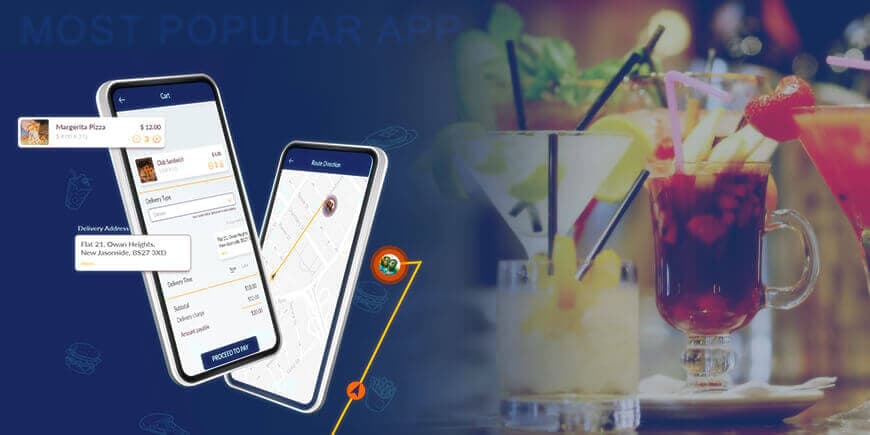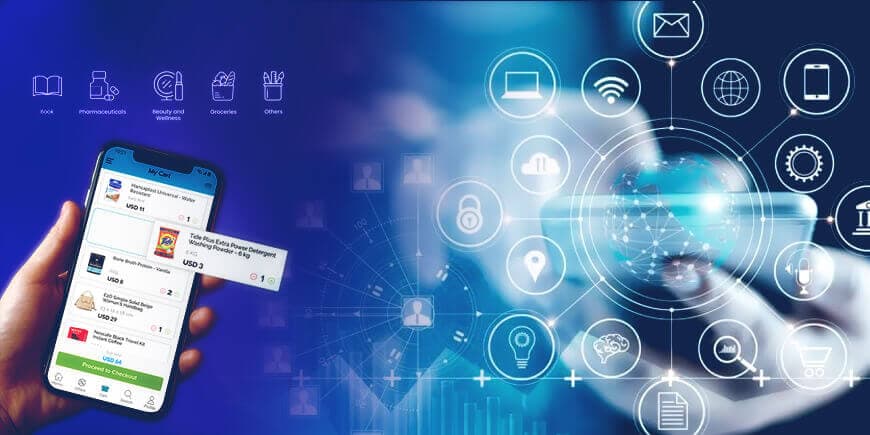Table of Content
(501 views)

Quick Summary
The mobile app development industry is more relevant than ever when everyone has at least some kind of mobile device. At the same time, the industry is growing significantly, with the recent pandemic having a massive impact on it. Hence, here are the ten mobile app statistics that will define digital transformation in 2026.
1) Mobile App Startups Attract More Funding

In 2020, mobile companies received $73 billion in investments from venture capitalists. According to Crunchbase, businesses working with mobile solutions have received 26% of all global funding.
Mobile-app-centered small companies and startups receive more funding than non-mobile-app-centered-ones with such categories as e-commerce, fintech, and transportation receiving special attention and more investment.
This means mobile app development is still one of the most in-demand fields, with companies working in this industry attending a lot of funding.
2) Users Spent Several Hours A Day on Average Using Apps
On average, users spend around 4.2 hours every day using mobile apps. Moreover, in the previous year, the time spent on mobile apps has surpassed the amount people spend on live TV.
From messengers to social media to games and other apps, consumers spend a lot of time using their mobile devices, which means companies have numerous opportunities to reach them through various online channels.
This statistic particularly stresses the importance of mobile apps for businesses relying on them to communicate with their audience somehow.
3) Consumers Spend Billions on Mobile Apps Every Year
Another resource consumers spend on mobile apps is money, with 2020 seeing $143 billion spent on mobile apps. This number increased by 20% from the year before that and will likely grow in the future.
Of course, there are numerous free apps, but even they are turning in a profit with the paid in-app purchases. Even though most mobile app users probably prefer getting free apps, many of them are still spending a lot on apps which is where such big numbers are coming from.
4) Different Generations Are Using Apps More and More
What’s interesting is that different generations are using mobile apps more and more – millennials and Gen z and baby boomers. According to eMarketer, 6 in 10 baby boomers are digital buyers, while 50% of people aged 55-65 years old using an e-commerce app in the past month at the time of the survey.
According to Security.org, more baby boomers are using social media every day, and 84% feel that social media improves their lives. Such findings show that all generations can be reached through mobile apps, mainly social media.
5) Mobile Internet Time Is Mostly Used on Mobile Apps
Research shows that almost 90% of mobile Internet is spent on mobile apps. As Gregory Jackson from the custom writing service reviews site Online Writers Rating notes, “Because people spend so much time in mobile apps, perhaps the best place to advertise your app is exactly that – in other apps.
Ads in mobile apps are extremely popular with mobile developers choosing to promote their mobile apps in other mobile apps.”
6) Food and Drink Delivery Apps Are Extremely Popular Nowadays

Due to the pandemic and so many people staying at home, food and drink delivery apps are now top-rated. According to Marketwatch, the top four US delivery apps (UberEats, Doordash, Postmates, and Grubhub) earned a total of $5.5 billion in revenue from April to September of 2020. This is twice the amount of what they had been acquiring over the same period last year.
Though the numbers will likely decline after the pandemic, many people will still stay on the apps as users, making the revenue of such apps higher than it was before the pandemic.
7) At-Home Fitness Apps Are Also Gaining More Traction
Other apps that saw significant changes due to the pandemic are the at-home fitness apps that are also gaining more traction. Consumer spend amounted to $2 billion with such mobile apps, with the overall growth being around 30% compared to the previous year.
Mobile apps that offer at-home workouts, virtual group fitness sessions, live coaching classes, and various other similar fitness features will be growing in popularity now that they have gained so many new users.
8) Outdoor Exploration Apps Are Influencing the Travel Industry
Like at-home fitness apps, outdoor exploration apps are also becoming more influential and promise excellent travel industry outcomes. Most people are waiting for the pandemic to end entirely so that they can finally come out of their homes and see the world by traveling either in their own country or even abroad.
That’s why so many outdoor exploration apps are now more popular, which means the travel industry will benefit from them.
9) Business Apps Are Significantly More Popular Than Before

Even though many people are still at home, it seems that so many of them are thinking about what happens after they go out once the pandemic ends. Because so many people lost their jobs, it’s evident that many have now considered ways to become independent economically.
That’s probably why business apps saw a 275% growth over the past year (in terms of usage and time spent).
10) Consumers Discover Apps from Friends and Family
One more statistic that mobile app companies need to remember is that consumers discover apps from friends and family. App Annie Intelligence finds that 37% of users cited friends and family as their primary source of mobile app discovery.
Of course, this means that mobile app developers and advertisers need to find new ways to get through to potential users because otherwise, their apps simply won’t be discovered.
Final Thoughts
To sum up, the mobile app industry has grown significantly over the past year, reflected in the trends taking place already in 2021. To be successful in this field, you need to keep in mind these statistics and use them to your advantage. Contact us to know more.
FAQs
Ans.
Mobile apps enable businesses to engage users directly, collect real-time insights, and adapt faster to changing digital behaviors, making them essential for digital transformation.
Ans.
On average, users spend over 4 hours per day using mobile apps, making apps a primary channel for customer engagement and brand interaction.
Ans.
Industries like e-commerce, fintech, food delivery, fitness, travel, and business services are experiencing rapid growth through mobile app adoption.
Ans.
Yes, mobile apps generate significant revenue through in-app purchases, subscriptions, and ads, contributing billions in global consumer spending annually.
Ans.
Most users discover apps through friends and family recommendations, highlighting the importance of user experience and word-of-mouth marketing.
Mary Smith
Mary Smith excels in crafting technical and non-technical content, demonstrating precision and clarity. With careful attention to detail and a love for clear communication, she skillfully handles difficult topics, making them into interesting stories. Mary's versatility and expertise shine through her ability to produce compelling content across various domains, ensuring impactful storytelling that resonates with diverse audiences.
